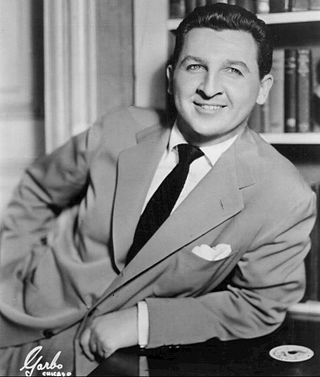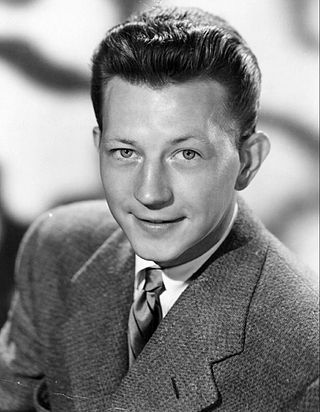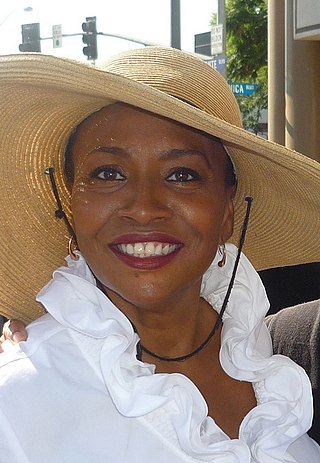
The Marx Brothers was an American family comedy act that was successful in vaudeville, on Broadway, and in 14 motion pictures from 1905 to 1949. Five of the Marx Brothers' fourteen feature films were selected by the American Film Institute (AFI) as among the top 100 comedy films, with two of them, Duck Soup (1933) and A Night at the Opera (1935), in the top fifteen. They are widely considered by critics, scholars and fans to be among the greatest and most influential comedians of the 20th century. The brothers were included in AFI's 100 Years... 100 Stars list of the 25 greatest male stars of Classical Hollywood cinema, the only performers to be included collectively.

The Hollywood Revue of 1929, or simply The Hollywood Revue, is a 1929 American pre-Code musical comedy film released by Metro-Goldwyn-Mayer. It was the studio's second feature-length musical, and one of their earliest sound films. Produced by Harry Rapf and Irving Thalberg and directed by Charles Reisner, it features nearly all of MGM's stars in a two-hour revue that includes three segments in Technicolor. The masters of ceremonies are Conrad Nagel and Jack Benny.

The Broadway Melody, also known as The Broadway Melody of 1929, is a 1929 American pre-Code musical film and the first sound film to win an Academy Award for Best Picture. It was one of the early musicals to feature a Technicolor sequence, which sparked the trend of color being used in a flurry of musicals that would hit the screens in 1929–1930. Today, the Technicolor sequence survives only in black and white. The film was the first musical released by Metro-Goldwyn-Mayer and was Hollywood's first all-talking musical.

Lionel Barrymore was an American actor of stage, screen and radio as well as a film director. He won an Academy Award for Best Actor for his performance in A Free Soul (1931), and is known to modern audiences for the role of villainous Mr. Potter in Frank Capra's 1946 film It's a Wonderful Life.

Edward Vincent Bracken was an American actor. Bracken became a Hollywood comedy legend with lead performances in the films Hail the Conquering Hero and The Miracle of Morgan's Creek both from 1944, both of which have been preserved by the National Film Registry. During this era, he also had success on Broadway, with performances in plays like Too Many Girls (1940).

Donald David Dixon Ronald O'Connor was an American dancer, singer and actor. He came to fame in a series of films in which he co-starred with Gloria Jean, Peggy Ryan, and Francis the Talking Mule.

Jenifer Jeanette Lewis is an American actress. She began her career appearing in Broadway musicals and worked as a back-up singer for Bette Midler before appearing in films Beaches (1988) and Sister Act (1992). Lewis is known for playing roles of mothers in the films What's Love Got to Do With It (1993), Poetic Justice (1993), The Preacher's Wife (1996), The Brothers (2001), The Cookout (2004), Think Like a Man (2012) and in the sequel Think Like a Man Too (2014), Baggage Claim (2013) and The Wedding Ringer (2015), as well as in The Temptations miniseries (1998).

Nils Anton Alfhild Asther was a Swedish actor active in Hollywood from 1926 to the mid-1950s, known as "the male Greta Garbo". Between 1916 and 1963 he appeared in over seventy feature films, sixteen of which were produced in the silent era. He is mainly remembered today for two silent films – The Single Standard and Wild Orchids – he made with fellow Swede Greta Garbo, and his portrayal of the title character in the controversial pre-Code Frank Capra film The Bitter Tea of General Yen.

Edward Sedgwick was an American film director, writer, actor and producer.

Hello Pop! is the third of five short films starring Ted Healy and His Stooges released by Metro-Goldwyn-Mayer on September 16, 1933. A musical-comedy film, the film also featured the Albertina Rasch Dancers and Bonnie Bonnell. The film was considered lost until a 35mm nitrate print was discovered in Australia in January 2013. Stooges Moe Howard, Larry Fine and Curly Howard were billed as "Howard, Fine and Howard."

Broadway Rhythm (1944) is a Metro-Goldwyn-Mayer Technicolor musical film. It was produced by Jack Cummings and directed by Roy Del Ruth.

Annie Get Your Gun is a 1950 American musical Technicolor comedy film loosely based on the life of sharpshooter Annie Oakley. The Metro-Goldwyn-Mayer release, with music and lyrics by Irving Berlin and a screenplay by Sidney Sheldon based on the 1946 stage musical of the same name, was directed by George Sidney. Despite several production and casting problems, the film won the Academy Award for Best Scoring of a Musical Picture and received three other nominations. Star Betty Hutton was recognized with a Golden Globe nomination for Best Actress.

The musical short can be traced back to the earliest days of sound films.
The March of Time is the title of an unreleased 1930 American Pre-Code musical film directed by Charles Reisner. The film was originally scheduled to be released in September 1930 by Metro-Goldwyn-Mayer but was shelved. The March of Time would have been one of the many musicals partially filmed in two-color Technicolor.

Broadway to Hollywood is a 1933 American pre-Code musical film directed by Willard Mack, produced by Harry Rapf, cinematography by Norbert Brodine and released by Metro-Goldwyn-Mayer. The film features many of MGM's stars of the time, including Frank Morgan, Alice Brady, May Robson, Madge Evans, Jimmy Durante, Mickey Rooney, and Jackie Cooper. Brothers Moe Howard and Curly Howard of The Three Stooges appear—without Ted Healy and without Larry Fine—almost unrecognizably, as Otto and Fritz, two clowns in makeup. It was the first film to feature Nelson Eddy.

Topsy and Eva is a 1927 American drama silent film directed by Del Lord and written by Catherine Chisholm Cushing, Scott Darling, Dudley Early and Lois Weber. D. W. Griffith also directed additional scenes. It is based on the two key female figures in Harriet Beecher Stowe's 1852 classic novel Uncle Tom's Cabin.

It's a Great Life is a 1929 American comedy film directed by Sam Wood and written by Al Boasberg and Willard Mack. The film stars Rosetta Duncan, Vivian Duncan, Lawrence Gray, Jed Prouty and Benny Rubin. The film was released on December 6, 1929, by Metro-Goldwyn-Mayer. During production, it was provisionally known as "Cotton and Silk".

Blanche L. Merrill was a songwriter specializing in tailoring her characterizations to specific performers. She is best known for the songs she wrote for Fanny Brice.

Catherine Chisholm Cushing was an American writer of songs, librettos, and plays, best known for her 1916 stage adaptation of Eleanor H. Porter's Pollyanna.

Mayme Gehrue was an American actress and dancer in musical theatre, vaudeville, and silent film.





















